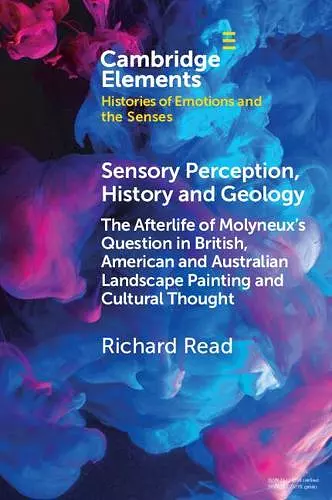Sensory Perception, History and Geology
The Afterlife of Molyneux's Question in British, American and Australian Landscape Painting and Cultural Thought
Format:Paperback
Publisher:Cambridge University Press
Published:17th Feb '22
Currently unavailable, and unfortunately no date known when it will be back

How Molyneux's Question shaped the conflict between empiricism and idealism in nineteenth-century British, American and Australian landscape painting and criticism.
This Element demonstrates how landscape paintings of unfamiliar terrains required historical and geological subject matter to supply tactile associations for empirical recognition of space, whereas idealism conferred unmediated but no less coercive sensory access.William Molyneux's question to John Locke about whether a blind man restored to sight could name the difference between a cube and a sphere without touching them shaped fundamental conflicts in philosophy, theology and science between empirical and idealist answers that are radically alien to current ways of seeing and feeling but were born of colonizing ambitions whose devastating genocidal and ecocidal consequences intensify today. This Element demonstrates how landscape paintings of unfamiliar terrains required historical and geological subject matter to supply tactile associations for empirical recognition of space, whereas idealism conferred unmediated but no less coercive sensory access. Close visual and verbal analysis using photographs of pictorial sites trace vividly different responses to the question, from those of William Hazlitt and John Ruskin in Britain to those of nineteenth-century authors and artists in the United States and Australia, including Ralph Waldo Emerson, Thomas Cole, William Haseltine, Fitz Henry Lane and Eugene von Guérard.
ISBN: 9781009095488
Dimensions: 229mm x 150mm x 6mm
Weight: 150g
75 pages